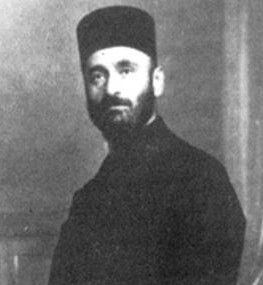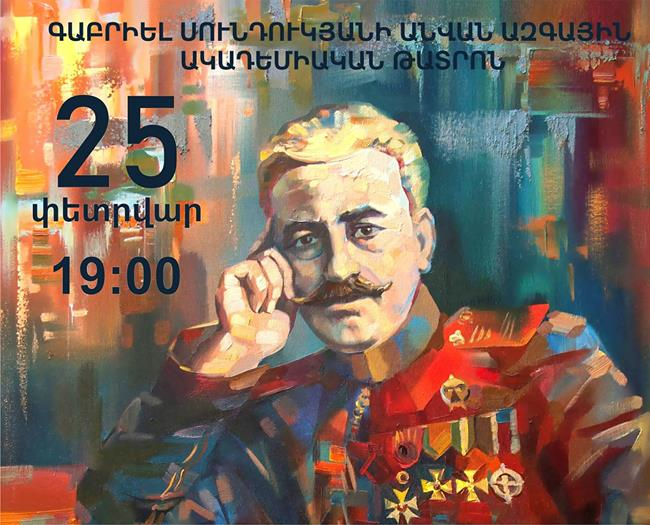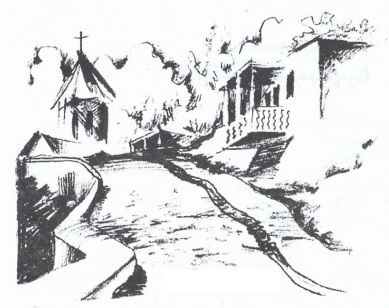 Biography
Biography
Soghomon (Gevorgi) Soghomonyan was born into a family whose members were deeply involved in music and were monolingual in Turkish. His mother died when he was one, and his father died ten years later. His grandmother looked after him until 1881, when a prelate of the local Armenian diocese went to Echmiadzin to be consecrated a bishop. The catholicos Gevork IV ordered him to bring one orphaned child to be educated at the Echmiadzin Seminary. Soghomon was chosen among 20 candidates and admitted into the seminary (where he impressed the catholicos with his singing talent) and graduated in 1893, after which he became a monk. According to church tradition, newly ordained priests are given new names, and Soghomon was renamed Komitas (named after the seventh-century Armenian catholicos who was also a hymn writer). Two years later, he became a priest and obtained the title Vardapet (or Vartabed), meaning a “priest” or a “church scholar.”
He established and conducted the monastery choir until 1896, when he went to Berlin, enrolled in the Kaiser Friedrich Wilhelm University and studied music at the private conservatory of Prof. Richard Schmidt. In 1899, he acquired the title Doctor of Musicology and returned to Echmiadzin, where he took over conducting a polyphonic male choir. He traveled extensively around the country, listening to and recording details about Armenian folk songs and dances performed in various villages. This way, he collected and published some 3000 songs, many of them adapted to choir singing.
His major work is Badarak (Divine Liturgy), still used today as one of the two most popular musical settings of the Armenian Church liturgy or mass, which he started composing in 1892 but never completely finished due to the upcoming World War I. For the basis of the work, he took chants sung by the eldest priests and upgraded it with typical (“cleaned” of foreign influences) Armenian music elements from his collected material. Today the best-known version of Badarak is his favourite for a four-voiced male choir. It must be understood that the Komitas Badarak was not an original composition per se, but rather an arrangement of the pre-existing melodies in use by Armenian priests for the singing of the mass. The words certainly are not original but are the text of the Armenian mass, which has been used for centuries. Armenian Church music was traditionally monophonic, but Makar Yekmalian, Komitas, and several other musician/composers in the 19th and 20th centuries arranged polyphonic versions of the pre-existing melodies. Some composers (but not Komitas or Yekmalian) created completely original musical settings of the liturgy as well.
He was the first non-European to be admitted into the International Music Society, of which he was a co-founder. He gave many lectures and performances throughout Europe, Turkey and Egypt, thus presenting till then very little known Armenian music.
From 1910, he lived and worked in Istanbul. There, he established a 300-member choir, Gusan. On April 24, 1915, the day when the Armenian Genocide officially began, he was arrested and put on a train the next day together with 180 other Armenian notables and sent to the city of Çankırı in northern Central Anatolia, at a distance of some 300 miles. His good friend Turkish nationalist poet Mehmet Emin Yurdakul, the writer Halide Edip, and the U.S. ambassador Henry Morgenthau intervened with the government, and, by special orders from Talat Pasha, Komitas was dispatched back to the capital alongside eight other Armenians who had been deported.[2] Details of his deportation can be found in Grigoris Balakian’s Armenian Golgotha, during which Komitas suffered tremendously and was afflicted with traumatic neurosis. In one passage Balakian relates how:
“ The more we moved away from civilization, the more agitated were our souls and the more our minds were racked with fear. We thought we saw bandits behind every boulder; the hammocks or cradles hanging from every tree seemed like gallows ropes. The expert on Armenian songs, the peerless archimandrite Father Komitas, who was in our carriage, seemed mentally unstable. He thought the trees were bandits on the attack and continually hid his head under the hem of my overcoat, like a fearful partridge. He begged me to say a blessing for him [“The Savior”] in the hope that it would calm him.[3] ”
In the autumn of 1916, he was taken to a hospital in Constantinople, Hôpital de la paix, and then moved to Paris in 1919, where he died in a psychiatric clinic in Villejuif in 1935. Next year, his ashes were transferred to Yerevan and buried in the Pantheon that was named after him. Source


